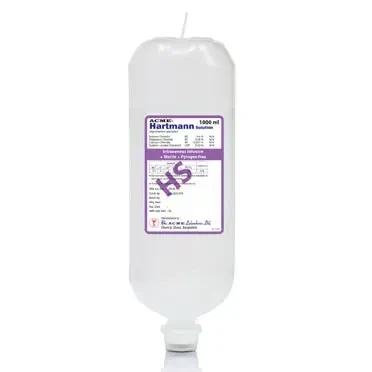

Ulrif Oral Suspension 200 ml bottle, Sucralfate 1 gm/5 ml
Inhouse product
-
৳11.40
৳12.00 -
৳42.75
৳45.00 -
৳16.63
৳17.50 -
৳2.14
৳2.25
Reviews & Ratings
Indications
Ulrif is indicated in
adults and adolescents over 14 years old for treatment of-
- Duodenal ulcer
- Gastric ulcer
- Chronic gastritis
- The prophylaxis of
gastrointestinal hemorrhage from stress ulceration in seriously ill
patients.
* রেজিস্টার্ড চিকিৎসকের পরামর্শ মোতাবেক ঔষধ সেবন করুন'
Pharmacology
Sucralfate is
non-systemic as the drug is only minimally absorbed from the gastrointestinal
tract. The minute amount which absorbed primarily excretes in the urine.
Sucralfate promotes the healing of gastric and duodenal ulcers by the formation
of a chemical complex that binds to the ulcer site to establish a protective
barrier. Besides, Sucralfate inhibits the action of pepsin and bile.
Dosage & Administration
Duodenal ulcer,
gastric ulcer, chronic gastritis-
- Adults: The usual dose is Sucralfate 2 gm twice daily to be
taken on rising and at bedtime or Sucralfate 1 gm four times a day to be
taken 1 hour before meals and at bedtime. Maximum daily dose is 8 gm but
up to twelve weeks may be necessary in resistant cases.
- Pediatric population: The safety and efficacy of Sucralfate in children
under 14 years of age has not been established.
- Elderly: There are no special dosage requirements for elderly
patients but as with all medicines the lowest effective dose should be
used.
Prophylaxis of
gastrointestinal hemorrhage from stress ulceration-
- Adults: The usual dose is Sucralfate 1 gm orally or via a
nasogastric tube 4 to 6 times a day. To prevent clogging of the
nasogastric tube flush with 10 ml of water following each administration.
The duration of treatment for prophylaxis of stress ulceration must be
individually determined. Treatment should be continued for as long as one
or more of the risk factors for stress ulceration is present but normally
not for more than 14 days.
Sucralfate should be
taken on an empty stomach. Antacid should not be administered within 30 minutes
of Sucralfate.
* রেজিস্টার্ড চিকিৎসকের পরামর্শ মোতাবেক ঔষধ সেবন করুন'
Interaction
Concomitant
administration of Ulrif may reduce the bioavailability of certain drugs
including Fluoroquinolones such as Ciprofloxacin and Norfloxacin, Tetracycline,
Ketoconazole, Sulpiride, Digoxin, Warfarin, Phenytoin, Theophylline,
Levothyroxine, Quinidine, and H2 antagonists. The bioavailability of these
agents may be restored by separating the administration of these agents from
Ulrif by two hours. This interaction appears to be non-systemic in origin
presumably resulting from these agents being bound by Ulrif in the
gastrointestinal tract. Because of the potential of Ulrif to alter the
absorption of some drugs from the gastrointestinal tract, the separate
administration of Ulrif from that of other agents should be considered when
alterations in bioavailability are felt to be critical for concomitantly
administered drugs. Ulrif should not be co-administered with citrate
preparations. Co-administration citrate preparations with Ulrif may increase
the blood concentrations of aluminium. The mechanism may be due to the
chelation of aluminium which is assumed to increase its absorption. The
administration of Ulrif 1 g and enteral feeds by nasogastric tube
should be separated by one hour in patients receiving Ulrif 1 g for the
prophylaxis of stress ulceration. In rare cases, bezoar formation has been
reported when Ulrif and enteral feeds have been given too closely together.
Contraindications
Sucralfate tablet and
suspension are contraindicated in patients with hypersensitivity to sucralfate.
Side Effects
The most common
adverse event was headache (3.4%) followed by nausea (2.3%), abdominal pain
(2.3%), constipation (1.1%), diarrhea (1.1%), and urticaria (1.1%). The
majority of patients who reported bezoars, had underlying medical conditions
that may predispose to bezoar formation (such as delayed gastric emptying) or
were receiving concomitant enteral tube feedings. Episodes of hyperglycemia
have been reported in diabetic patient.
Pregnancy & Lactation
Safety in pregnant
women has not been established and Sucralfate should be used during pregnancy
only if clearly needed. It is not known whether this drug is excreted in human
milk. Caution should be exercised when Sucralfate is administered to
breast-feeding women.
Precautions & Warnings
Ulrif should only be
used with caution in patients with renal dysfunction, due to the possibility of
increased aluminium absorption. Ulrif is not recommended for use in individuals
on dialysis. In patients with severe or chronic renal impairment, Ulrif should
be used with extreme caution and only for short-term treatment. Small amounts
of aluminium are absorbed through the gastrointestinal tract and aluminium may
accumulate. Aluminium osteodystrophy, osteomalacia, encephalopathy and anaemia
have been reported in patients with chronic renal impairment. For patients with
impairment of renal function, laboratory testing such as aluminium, phosphate,
calcium and alkaline phosphatase is recommended to be periodically performed
due to excretion impairment. The concomitant use of other aluminium containing
medications is not recommended in view of the enhanced potential for aluminium
absorption and toxicity. Bezoars have been reported after administration of
Ulrif mainly to severely ill patients in intensive care units. The majority of
these patients (including neonates in whom Ulrif is not recommended) had
underlying conditions that may predispose to bezoar formation (such as delayed
gastric emptying due to surgery, drug therapy or diseases that reduce motility)
or were receiving concomitant enteral tube feeding.
Use in Special Populations
Pediatric Population:
Ulrif is not recommended for use in children under 14 years of age due to
insufficient data on safety and efficacy.
In elderly patients: Dose adjustments are not necessary.
Renal Impairment: Ulrif should be used with caution in renal insufficiency
patients.
Effects on ability to drive and use machines: Patients should not be drive if
feel dizzy or drowsy.
Overdose Effects
In a clinical trial on
healthy men of overdose with Ulrif, most cases remained asymptomatic but
symptoms of abdominal pain, nausea, and vomiting were reported in a few cases.
Acute oral toxicity studies in animals using doses up to 12 gm/kg body weight
could not find a lethal dose. Risks associated with overdose should therefore
be minimal.
Therapeutic Class
Chelating complex
Storage Conditions
Store in a cool and
dry place, protected from light.
Frequently Bought Products
Hemorist Syrup 200 ml bottle, Abhayarista
Lubgel Ophthalmic Solution Carboxymethylcellulose Sodium 1%
Canaglif Tablet, Canagliflozin Hemihydrate 100 mg
Blast Oral Solution 60 ml bottle, Bilastine 12.5 mg/5 ml
Fluconal Tablet, Fluconazole 150 mg
QTP Tablet, Quetiapine Fumarate 100 mg
Product Queries (0)
Login Or Registerto submit your questions to seller
Other Questions
No none asked to seller yet
-
৳11.40
৳12.00 -
৳42.75
৳45.00 -
৳16.63
৳17.50 -
৳2.14
৳2.25












![Rice Saline Oral Powder 250 ml sachet, Oral rehydration salt [rice based]](https://skpharma.com.bd/public/uploads/all/kRhnZFH7ZbdaNHoTyzC99TpQT5E8MKOQjmtl8Wnl.jpg)




